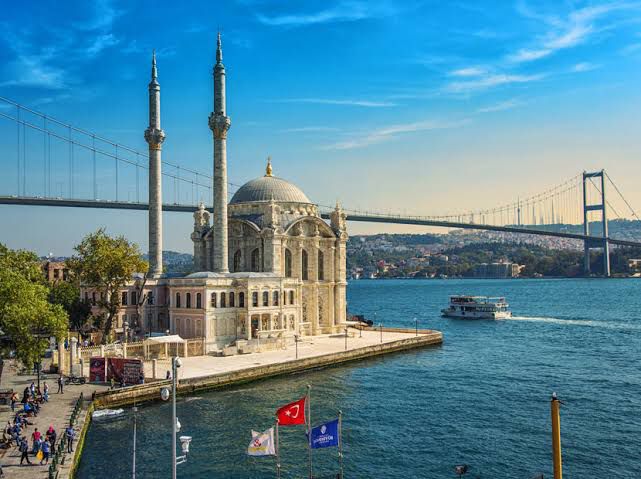

Istanbul is a city located in the Marmara Region of Turkey and one of the 81 provinces of the Republic of Turkey. It is the country's largest and most populated province in terms of population. It is one of the leading cities in terms of economic, historical and socio-cultural aspects.[6][7][8] The city ranks 34th in the world in terms of economic size. It ranks first in Europe and sixth in the world, according to the ranking made by considering the municipal boundaries in the list of cities by population.
Istanbul was established in the northwest of Turkey, along the Marmara coast and the Bosphorus, surrounding the Golden Horn. Istanbul is a transcontinental city, the European part is called the European Side or the Rumeli Side, and the Asian part is called the Anatolian Side or the Asian Side. For the first time in history, the western border of Istanbul, which was founded on a peninsula surrounded by the Sea of Marmara, the Bosphorus and the Golden Horn, was forming the Istanbul Walls. During the development and growth process, the city has 39 districts, which were expanded 4 times with the construction of the city walls, each time moving further to the west. Within its borders, there are a total of 40 municipalities including the metropolitan municipality.
Istanbul, one of the oldest cities in the world, was the Roman Empire between 330-395, the Byzantine Empire between 395-1204, the Latin Empire between 1204-1261, the Byzantine Empire again between 1261-1453 and finally the Ottoman Empire between 1453-1922. He was the capital of . In addition, Istanbul became the center of the Islamic world from 1517, when the Caliphate passed to the Ottoman Empire, until 1924, when it was abolished.
In recent years, with the archaeological findings unearthed one after another, important information about the history of humanity has been obtained. With the stone tools excavated from Yarımburgaz Cave, it was revealed that the traces of primitive humans date back to 400,000 years ago. Excavations and related researches carried out on the Anatolian Side showed that the first settled human community based on agriculture and animal husbandry in the city was Fikirtepe Culture dating back to 5500 BC. These archaeological findings are the oldest human traces not only in Istanbul but also in the entire Marmara Region. The first settlements on a city basis within the borders of Istanbul are Chalcedon on the Anatolian Side; It is Byzantion on the European side. Istanbul, which served as the capital of the states under its sovereignty for hundreds of years before the Republican era, lost this feature when the capital was moved to Ankara on 13 October 1923; however, it continued to be the country's center of commerce, industry, transportation, tourism, education, culture and art.
The geopolitical importance of Istanbul is quite high as it hosts the Bosphorus, which connects the Black Sea and the Sea of Marmara and separates Asia and Europe. Today, there are natural harbors that are almost completely filled or lost. Because of these features, there have been long-term sovereignty disputes and wars over the territory of the region. The main streams are Riva, Kağıthane and Alibey streams. The province's lands are less rough and its highest point is Aydos Hill in Kartal district. The main natural lakes in the province are Büyükçekmece, Küçükçekmece and Durusu lakes. Transition characteristics are seen between the Black Sea and Mediterranean macro climates in the province and its surroundings. Air temperatures and precipitation averages are irregular; vegetation is unstable..